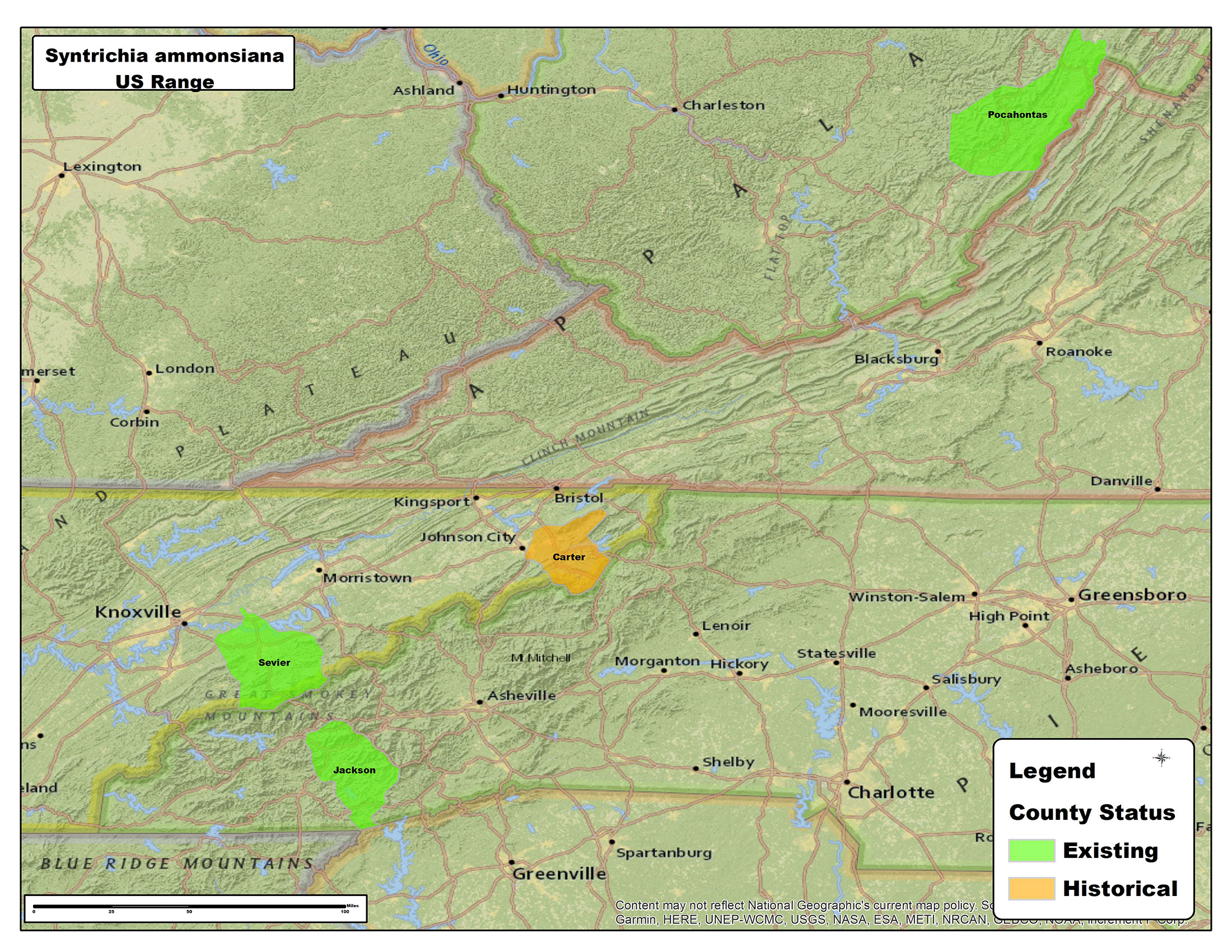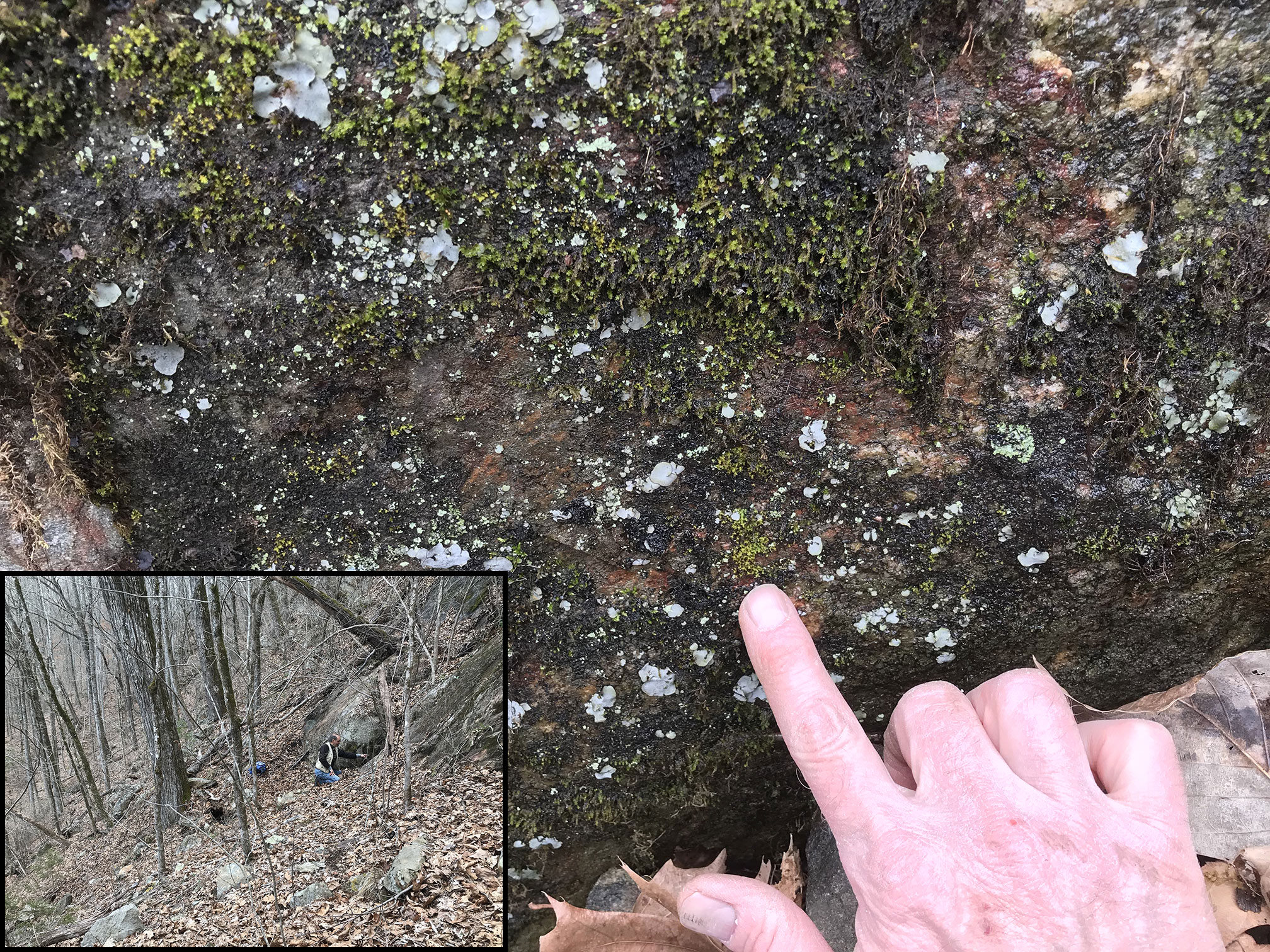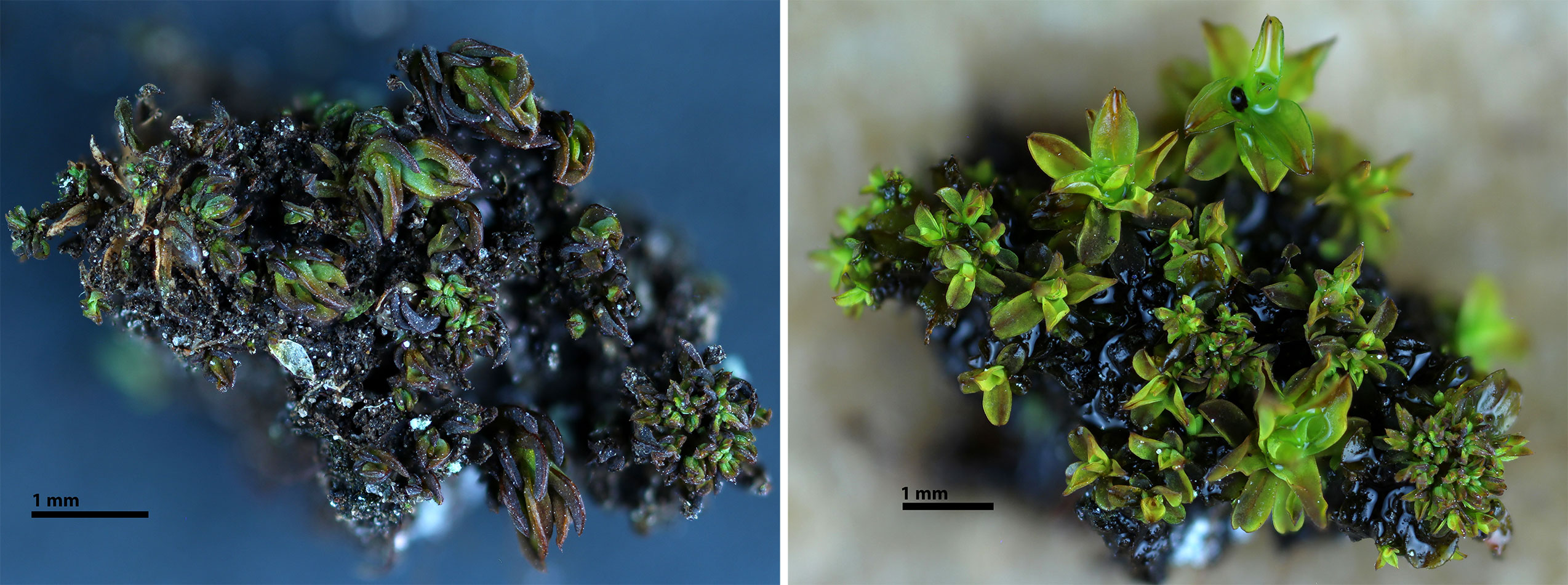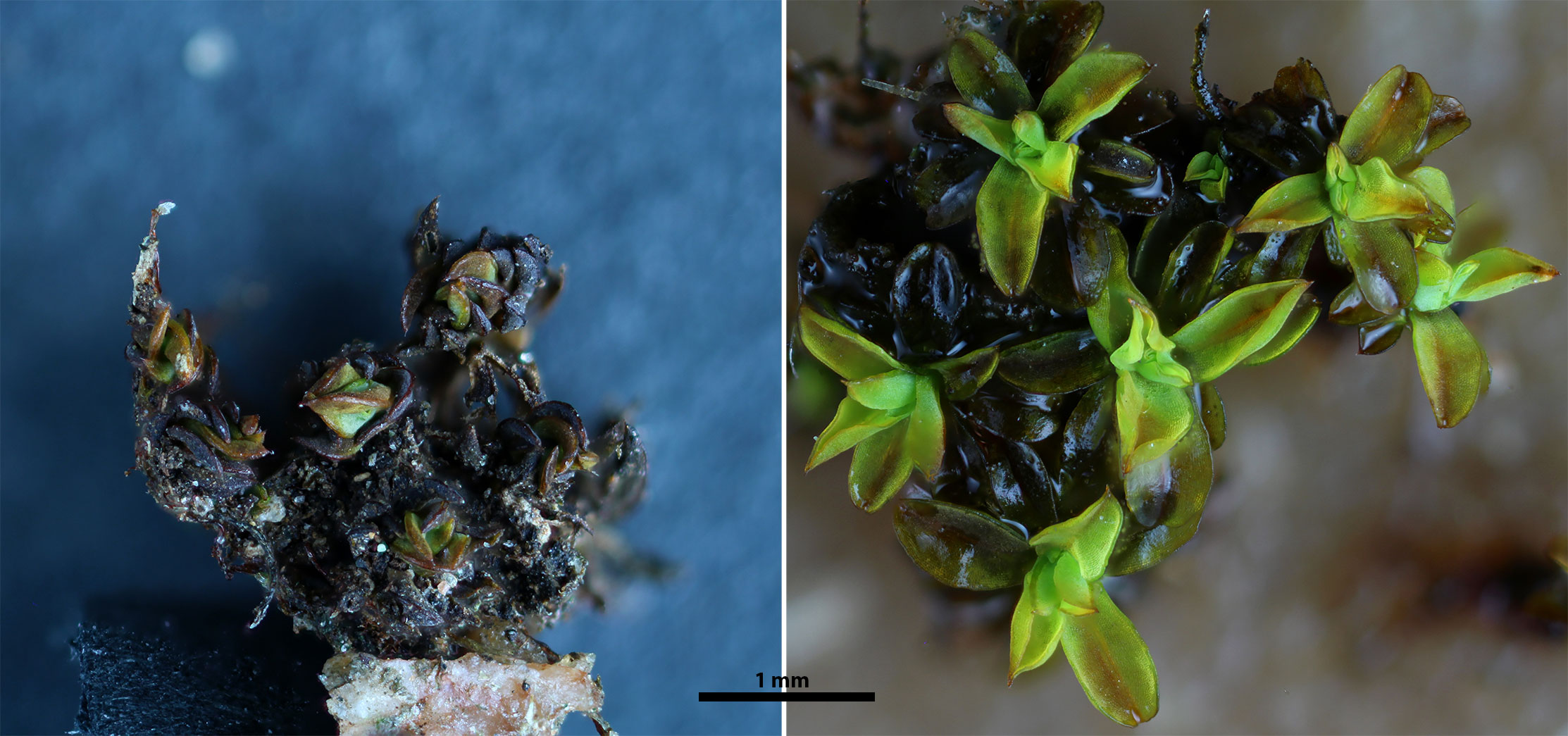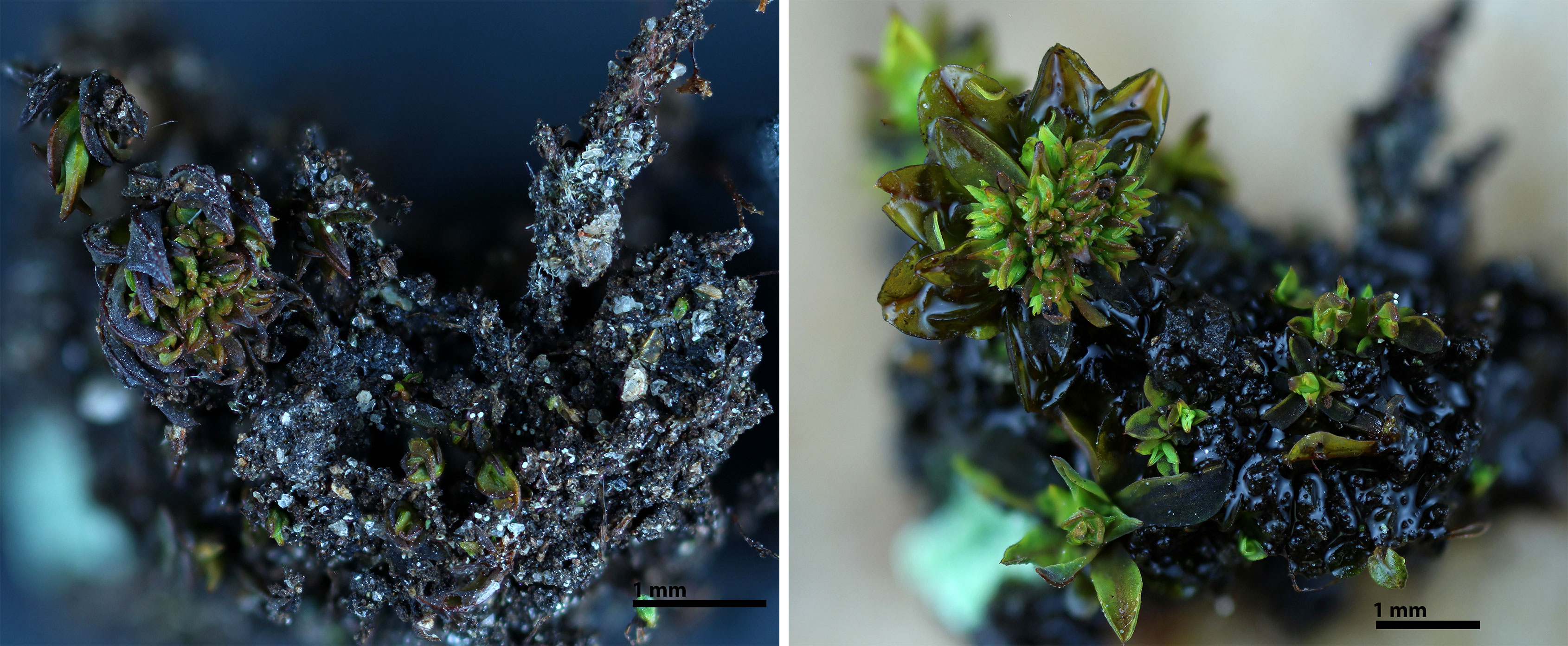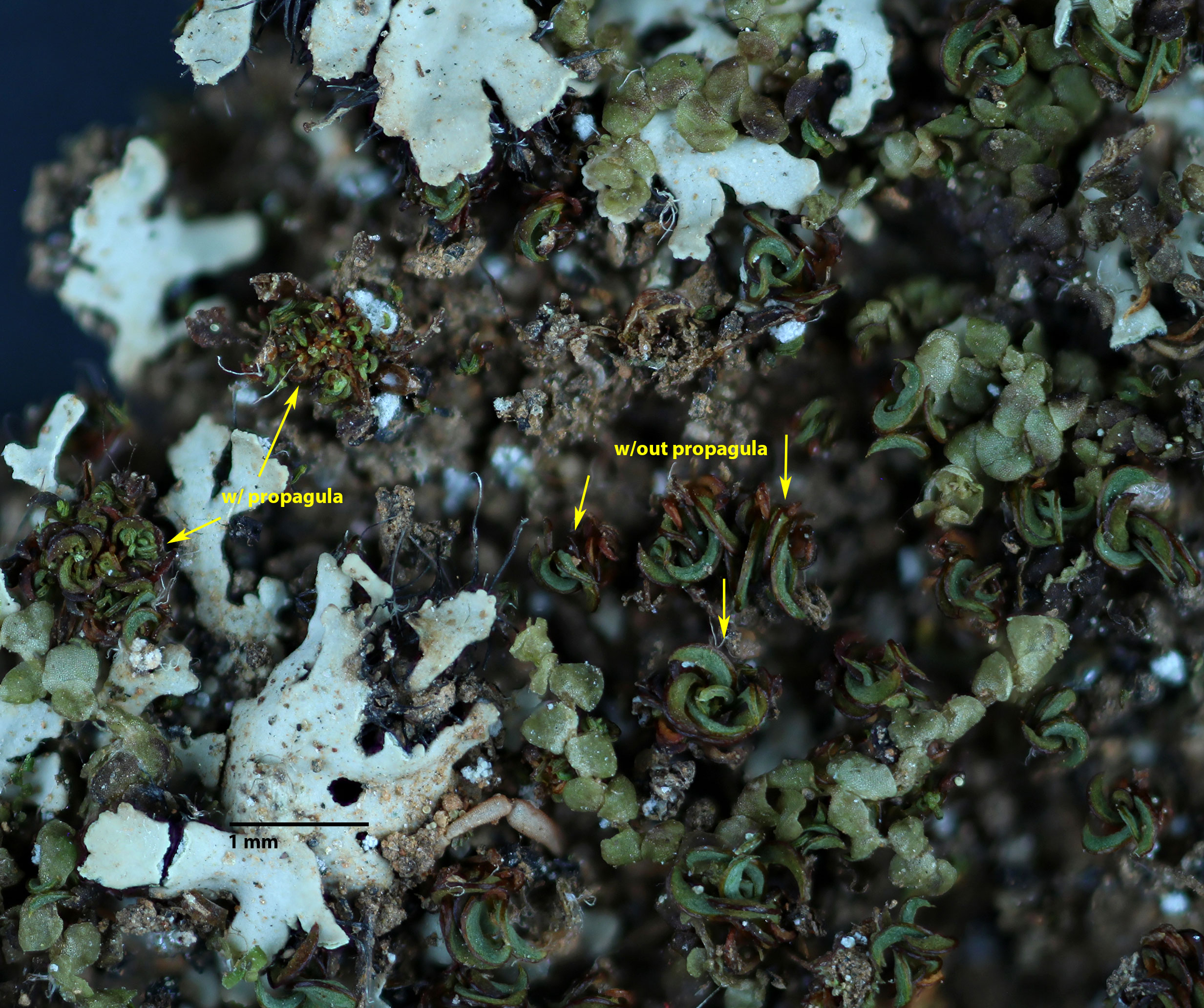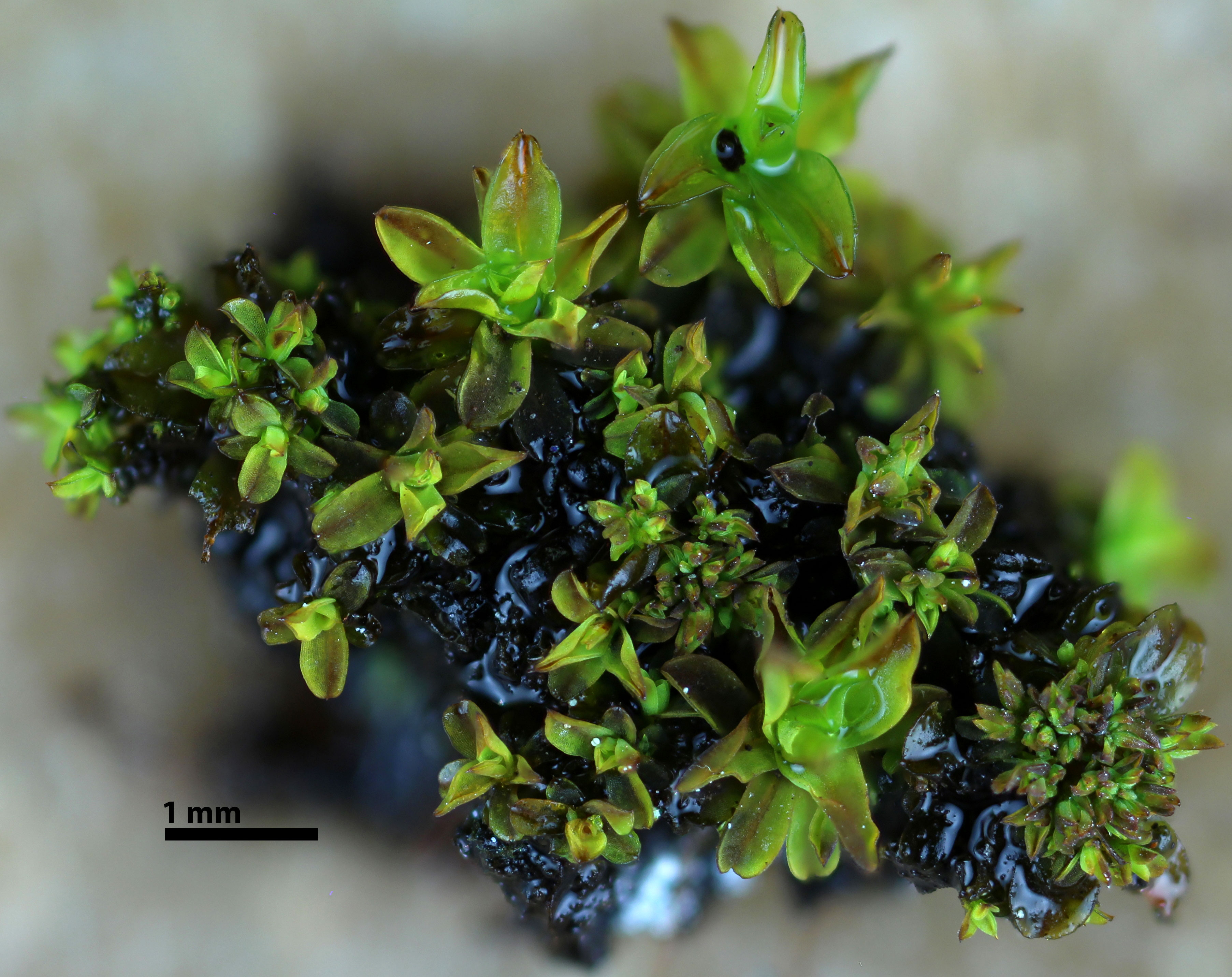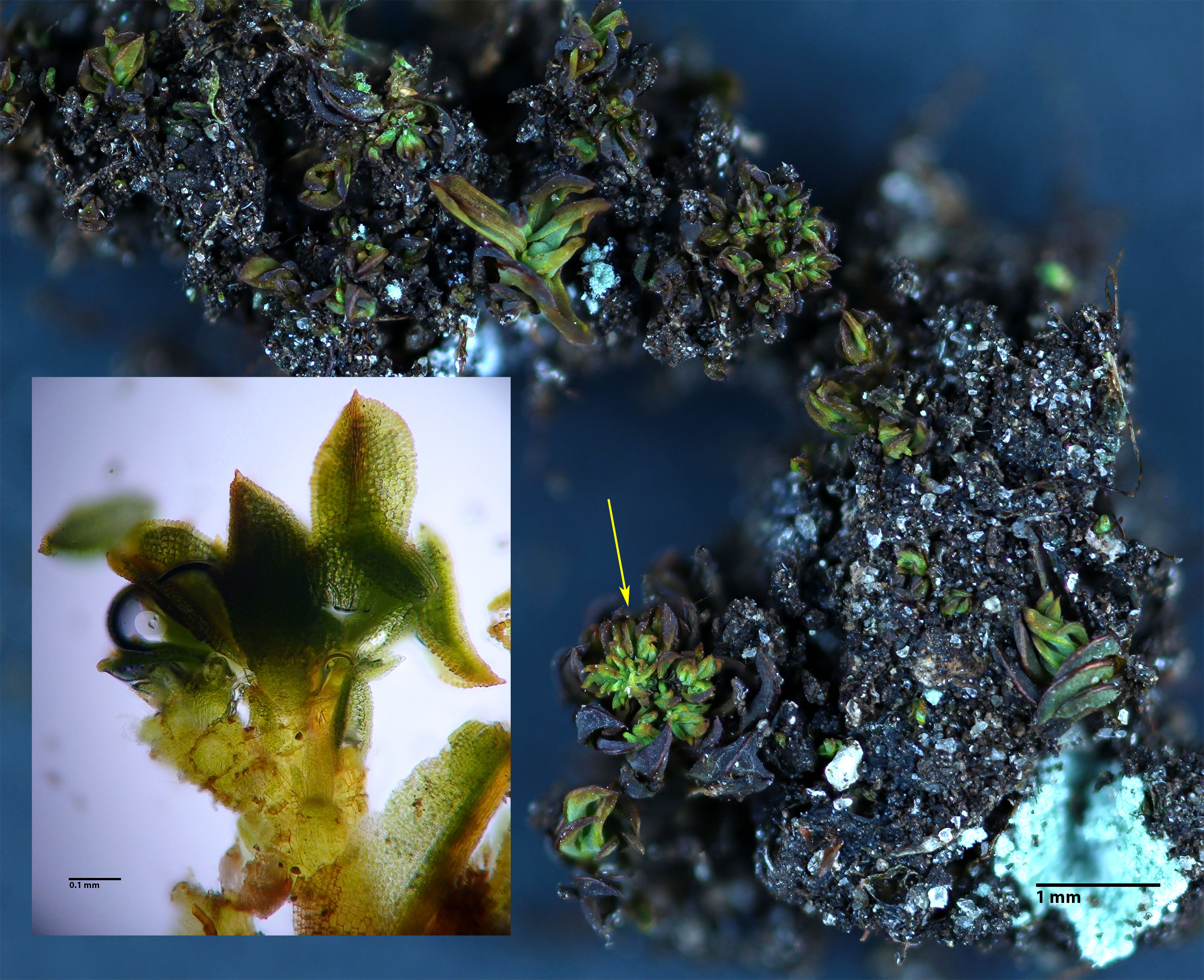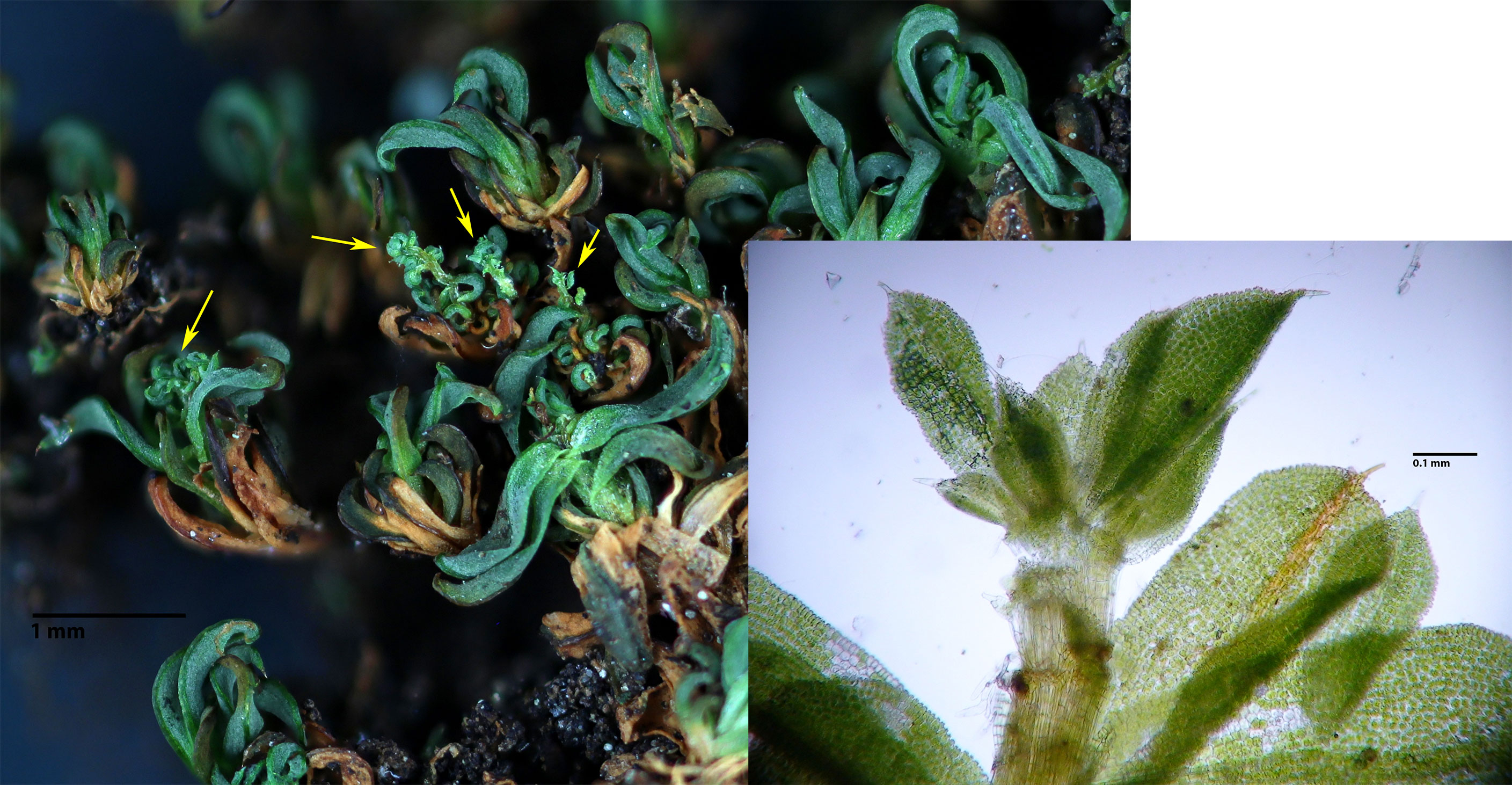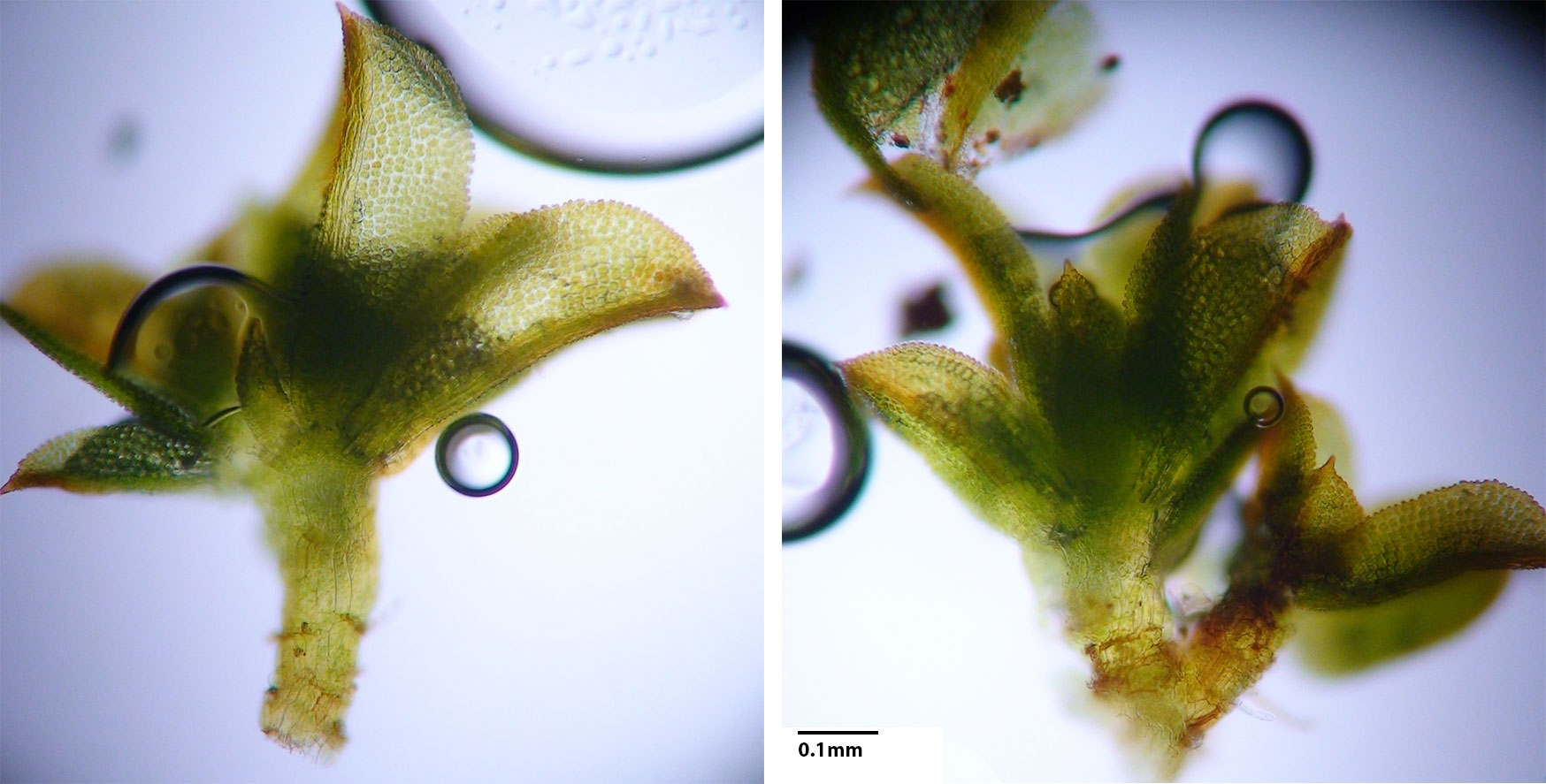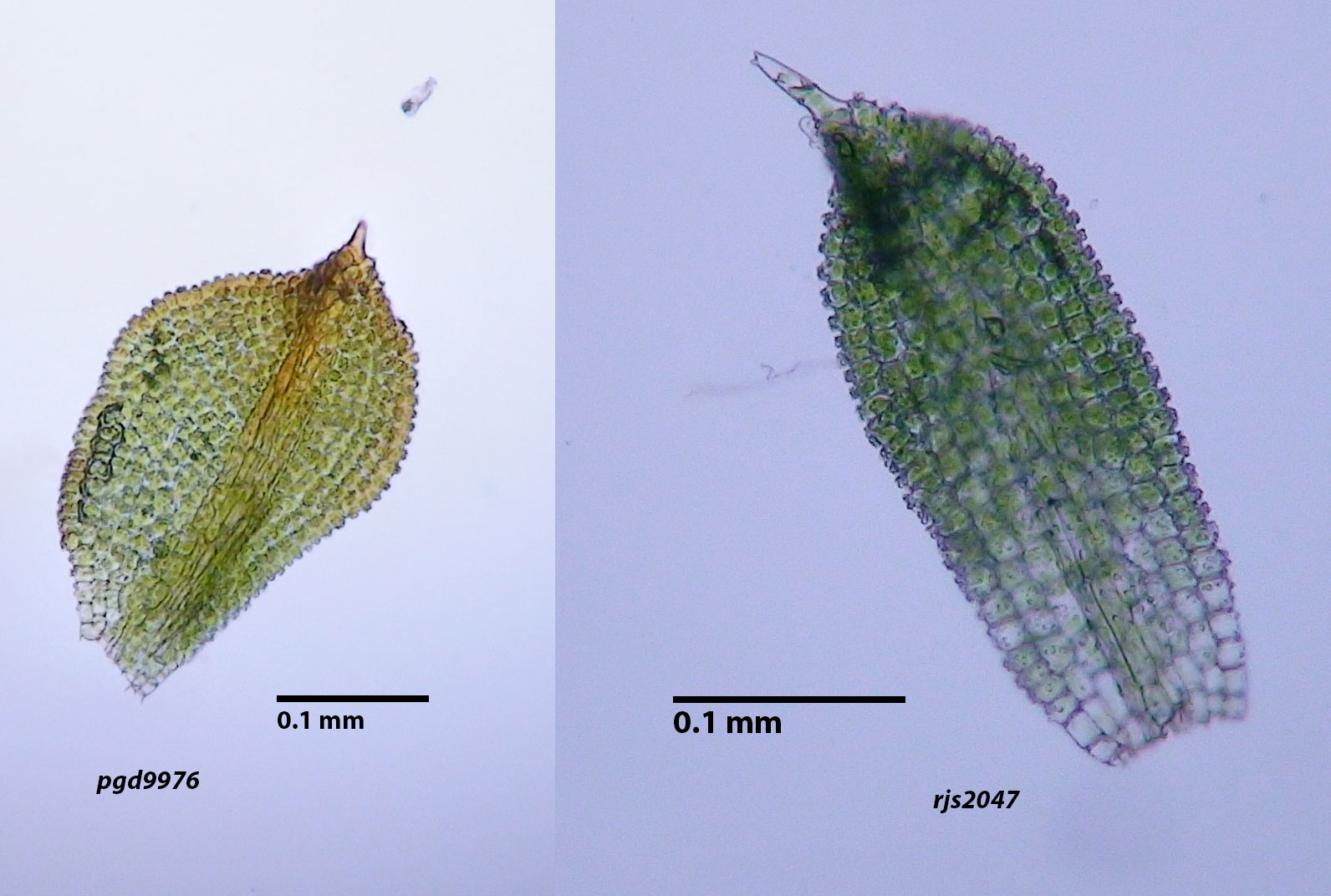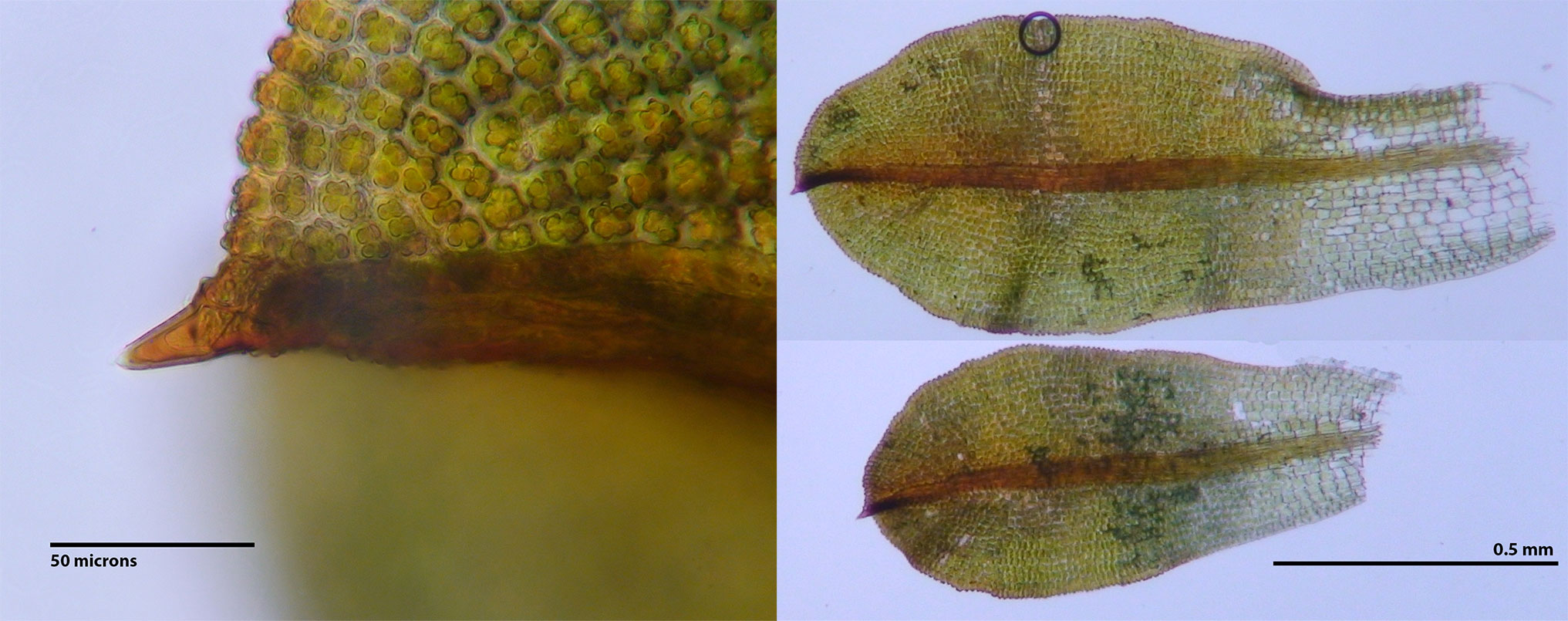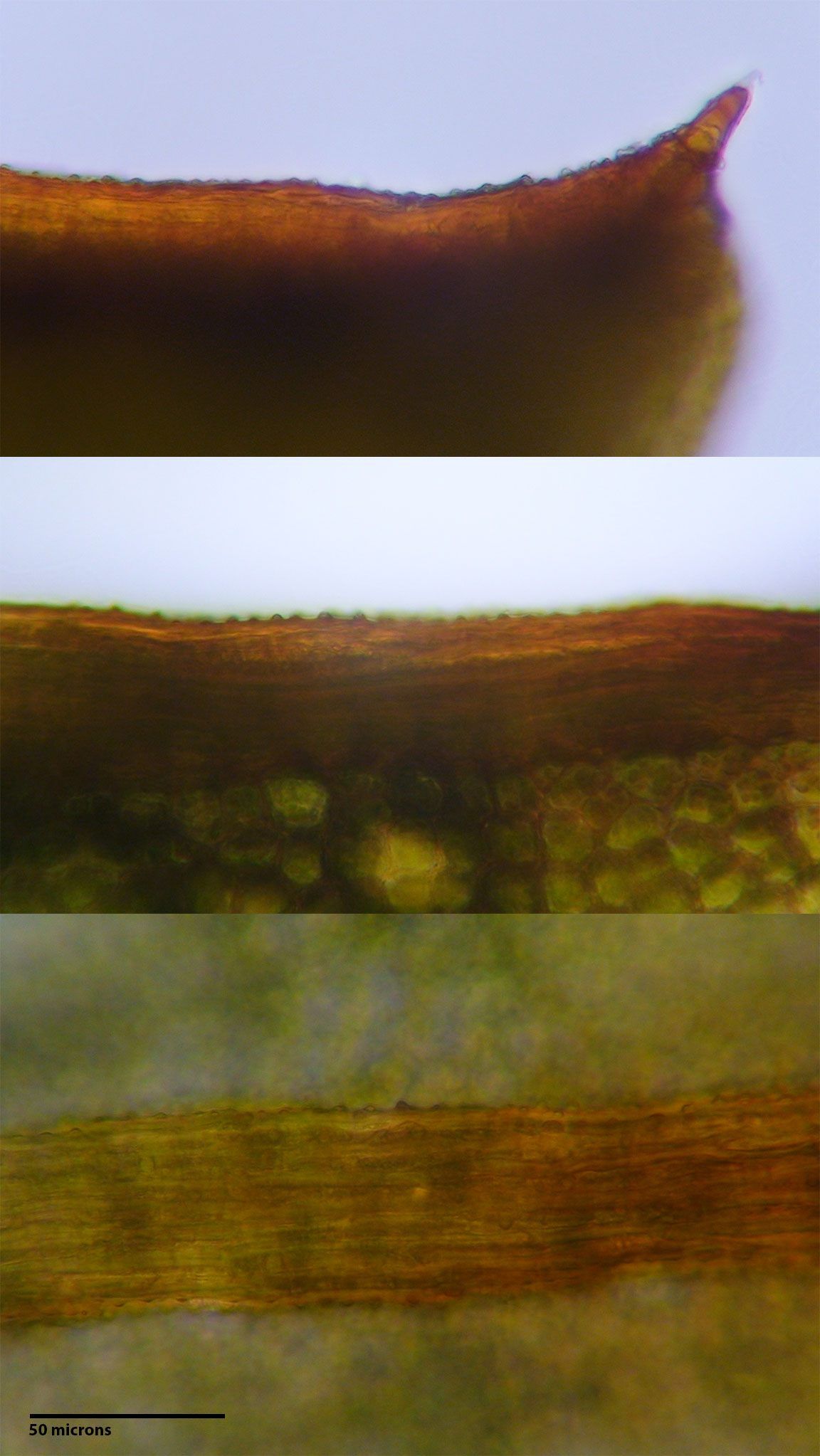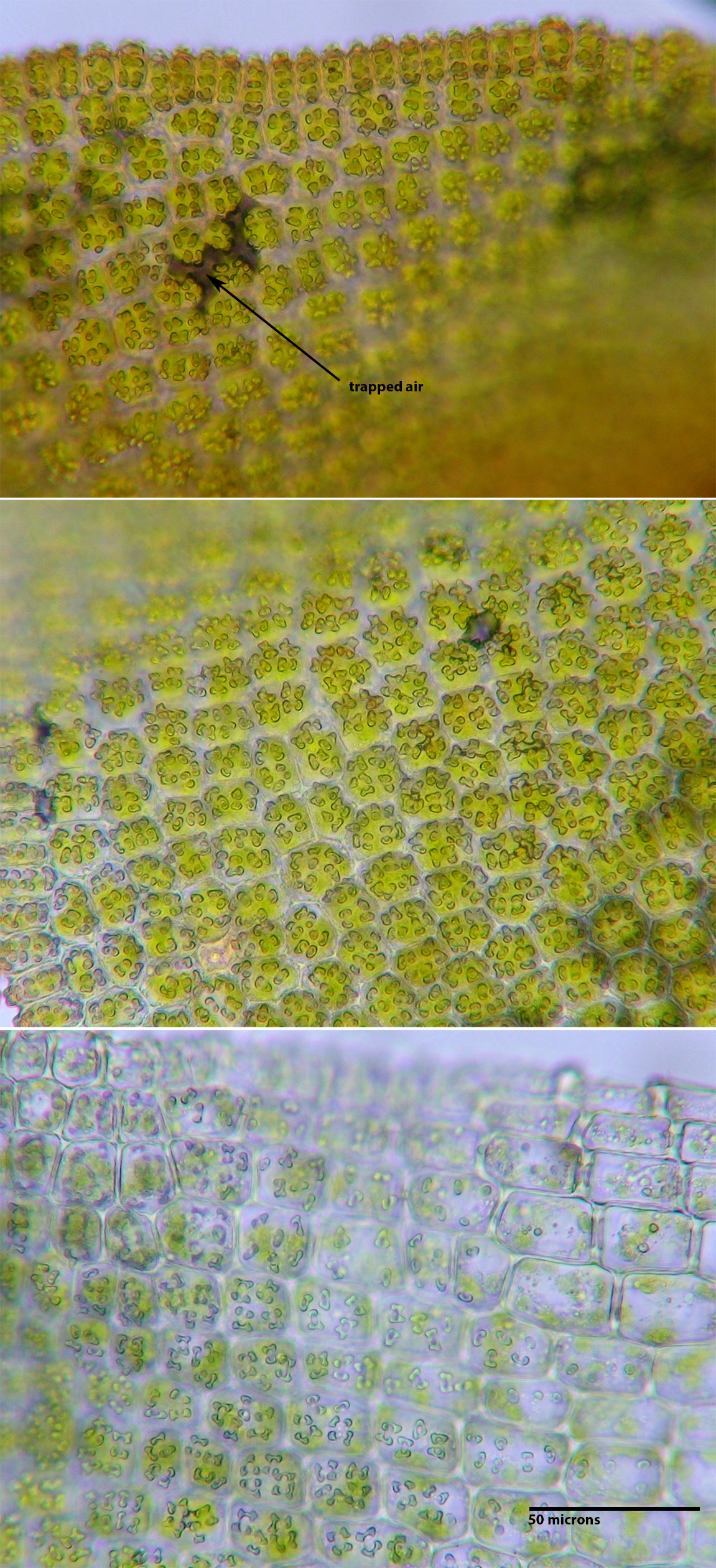Syntrichia ammonsiana (H. A. Crum & L. E. Anderson) Ochyra
Family: Pottiaceae
Synonyms
Tortula ammonsiana H. A. Crum & L. E. Anderson
NatureServe Conservation Status
G1G3
Distribution
North America, U.S.A. (North Carolina, Tennessee, West Virginia). Africa. South America. (Mishler 2007).
Habitat
The following regional habitat information is taken almost verbatim from Risk (1996, p. 22). Occurring topographically on steep, southeast- to west-facing slopes in ravines or concave slopes. Found in forests consisting of a rich mix of hardwoods below montane mafic cliff communities. Dominant tree species include Liriodendron, Quercus rubra, Acer saccharum, Fraxinus americana, and Carya glabra with an understory of Lindera benzoin, Cornus florida and a rich herbaceous layer. Substrate is nutrient rich siliceous outcrop or cliff over which seepage frequently occurs. In North Carolina, the species was consistently found on small outcrops oriented perpendicular to the slope over which seepage could occur and deposit a variably thick veneer of soil. In Tennessee and West Virginia, the species was found in moist crevices of nutrient rich cliffs. Moderate elevations (2000-4300 ft).
Most regional occurrences are prone to extended periods of dryness. Risk (1996) reported that only one site trended towards "perennially moist/wet." Risk (1996) suggested that most habitats would experience extended hydration from middle or late fall through the middle of spring.
Given that the species was found on rocks and tree trunks in Africa and South America (see Magill 1981, Gallego and Cano 2007), its occurrence on trees regionally is possible. Risk (1996, p. 6) reported the single regional occurrence of "a number of stems" of S. ammonsiana "on soil attached to the base of a poison ivy stem" with a larger population above on rock (presumably the source for dispersal to the poison ivy).
Brief Description and Tips for Identification
The following was compiled from Crum and Anderson (1981), Gallego et al. (2006), Mishler (2007), Risk (1996), and augmented from personal observation (this study).
Loosely tufted on rock, stems erect, 5-10 mm tall. Dry plants dark in color, brown, red brown to nearly black; moist plants green. Leaves keeled-concave and infolded-contorted when dry, flat and wide-spreading when moist, spatulate. Leaves on lower portion of stem reduced in size. Leaves costate, costa extending as a short apiculus, costa weakly papillose at back (Gallego et al. 2006; this study). Leaf laminal cells pluripapillose. Leaf margins plane, entire, rarely with a few teeth at the leaf apex. Some shoots bearing apical clusters of leaflike propagula produced on axillary or terminal branchlets (stalks). Propagula costate.
Dioicous? Sporophytes known only from Africa (Magill 1981) but sexual condition was not specified (see Risk 1996, p. 20).
When dry (as often the case except during rainy weather) the dark and contorted leaves blend in with colors of the substrate making plants 'nearly impossible to find' in the field (Risk 1996). With careful use of a hand lens dry plants can be seen in the field. Alternatively, Risk (1996) advocated spraying rock surfaces with a mist bottle and waiting five to 10 minutes for plants to hydrate.
Regionally, two other species of Syntrichia may co-occur with S. ammonsiana: S. amphidiacea and S. fragilis. All three species lack an awned leaf apex as found in all other regional species of Syntrichia. S. ammonsiana and S. amphidiacea possess an apiculate leaf apex, S. fragilis a mucronate apex. S. fragilis is further distinguished by fragile leaves with sheets of cells breaking off and leaves when dry longitudinally folded and spirally twisted around the stem (Mischler 2007). Propagula of S. amphidiacea are cylindric and born on the surfaces of leaves. Propagula are absent in S. fragilis (Mishler 2007). Leaf margins are revolute in the lower half in S. amphidiacea, and revolute to plane in S. fragilis.
On the basis of leaflike propagula, S. ammonsiana is similar to Syntrichia laevipila (=Tortula pagorum in Crum and Anderson, 1981); however, in S. laevipila porpagula are ecostate and leaves end in an awn. Regionally, S. laevipila is "nearly always associated with human habitation" (Crum and Anderson 1981, p. 390).
Risk (1996) provided a thorough and extensive description of known habitats, provided details on the extent of regional populations, presented in detail the known biology of the species, and included 31 2x2 photographic slides showing the dry and wet habit of S. ammonsiana and its habitat in North Carolina, Tennessee and West Virginia.
Salient Features
- Propagula leaflike, costate, "borne in clusters at the tip of the stem and also in the axils of upper leaves on branched stalks" (Gallego et al. 2006)
- Leaf margins plane
- Costa shortly excurrent as an apiculus
- Costa papillose at back
- Leaves spatulate
References
Crum, H., and Anderson, L. E. 1979. Tortula ammonsiana, a new species from West Virginia. Bryologist, 469-472
Crum, H. A., and L.E. Anderson. 1981. Mosses of Eastern North America (Vol. 2). Columbia University Press
Gallego, M. T., Cano, M. J., and Guerra, J. 2006. Syntrichia ammonsiana (Pottiaceae), new to South America. The Bryologist, 109, 236-238
Gallego, M. T., and Cano, M. J. 2007. New reports of Syntrichia Brid.(Pottiaceae, Bryophyta) taxa from South America. Nova Hedwigia, 85(3), 457-462.
Mishler, B.D. 2007. Syntrichia. In: Flora of North America, North of Mexico 27: 618-627
Risk, A. C. 1996. Bryophyte Status Survey: Tortula ammonsiana H. A. Crum & L. E. Anderson. North Carolina Heritage Program.
Habitat
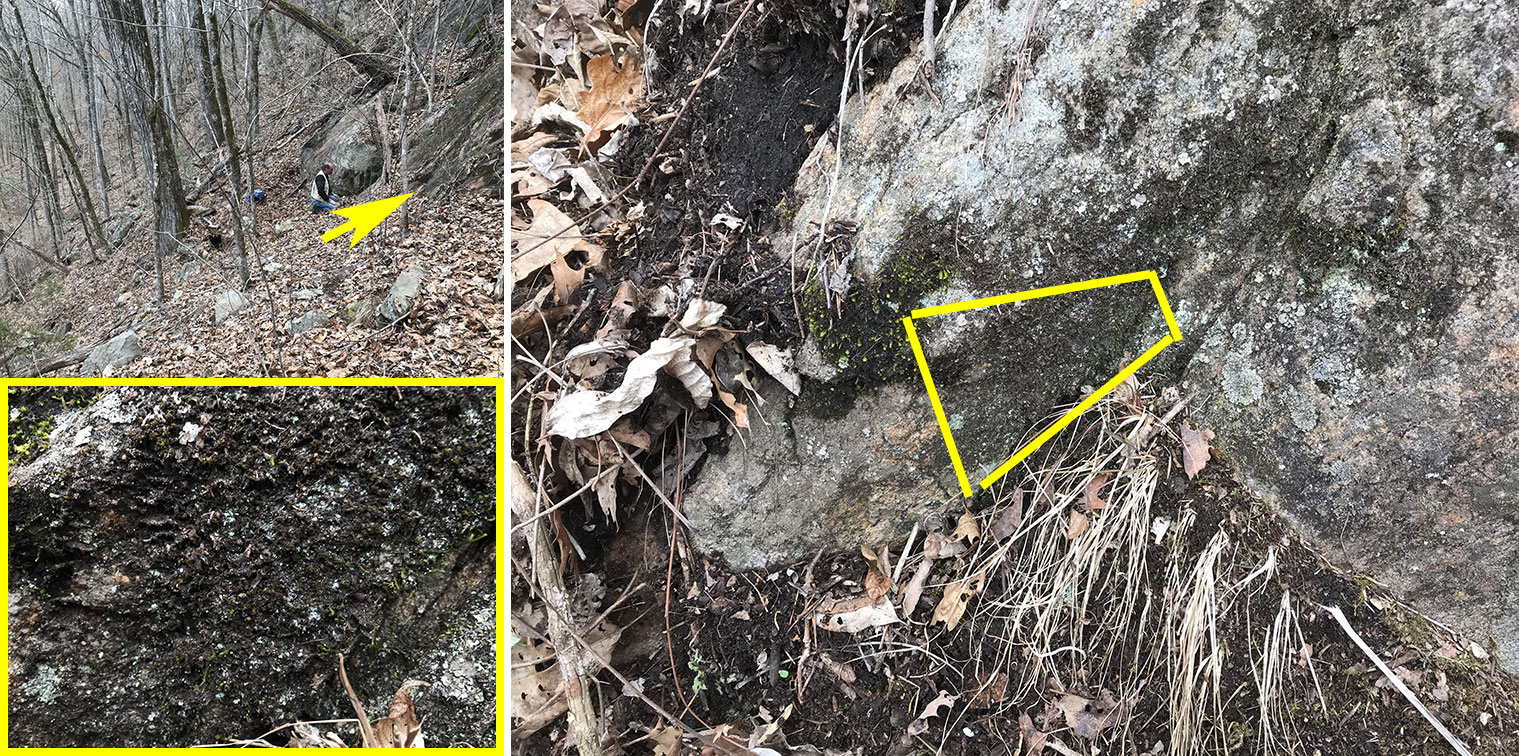
Syntrichia ammonsiana
On the face of dry rock in the area indicated. In the magnified inset (lower left), notice the rock face is covered by a thin layer of "flow dirt" deposited by seepage over the rock face during wet weather. The dry plants here are not visible in the photo nor in the field without the aid of hand lens.
Habit
Habit
Morphology
Morphology
Morphology
Syntrichia ammonsiana vs. Syntrichia amphidiacea
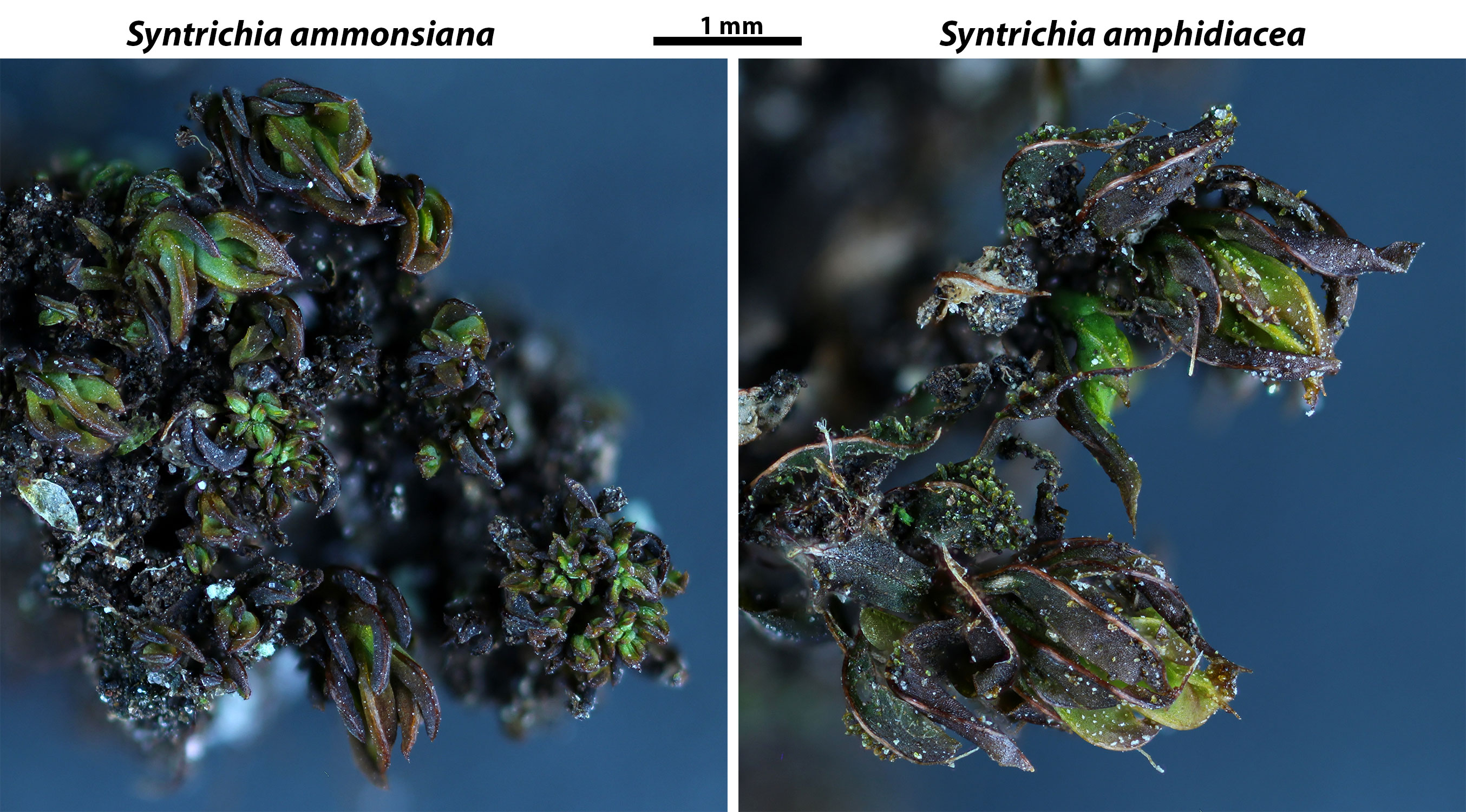
S. ammonsiana vs. S. amphidiacea
S. ammonsiana and S. amphidiacea may occur in close juxtaposition on the same rock and can be distinguished in the field even when dry. Propagula are small and cylindrical, borne over the leaf lamina as easily seen in the photo of S. amphidiacea above. Propagula are leaflike in S. ammonsiana and clustered at the shoot tip as seen especially in the lower right shoot in the left panel above. See the posting for S. amphidiacea for further description.
